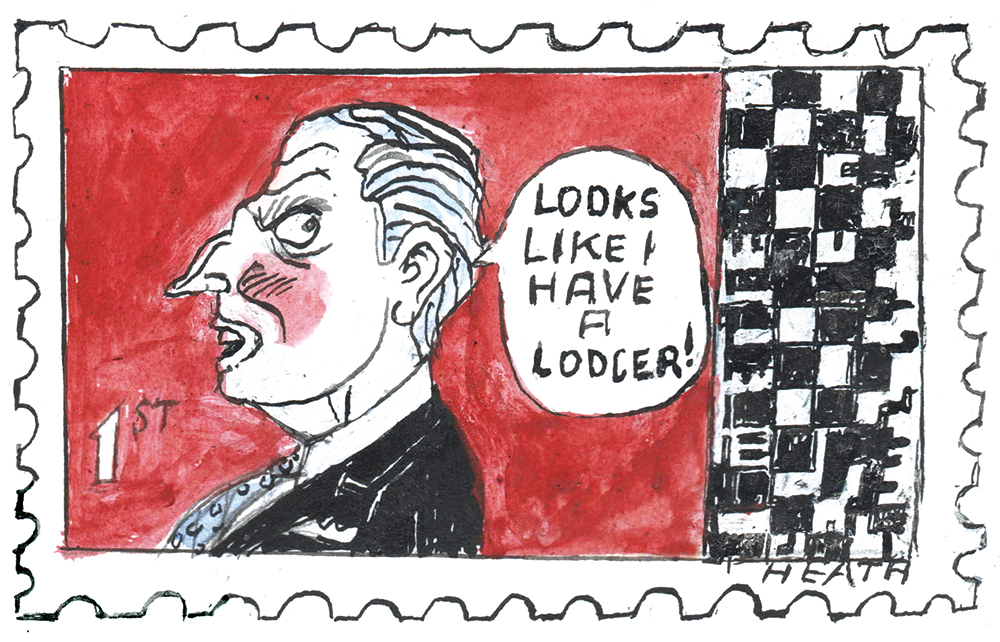Some of us still have stashes of traditional stamps which we were told would become redundant after 31 January. Royal Mail (whose CEO Simon Thompson is on £753,000 per annum) promised old ones could be exchanged for new, but the system has struggled to keep up with demand. Now a chaotic Royal Mail says there will be a ‘grace period’, allowing us to use traditional stamps until 31 July – after which we will have no choice but to go with the barcoded versions they have rolled out.
Barcodes have been spoiling the look of products, especially books, for 20 years and are now set to spoil envelopes. Worse, the barcodes, boasts Royal Mail, will soon be scannable, enabling us to watch and share ‘digital extras’ such as Shaun the Sheep videos.
It’s creepy enough that these days you can ask Alexa to send a comment to the talk radio station LBC. Stamp barcodes will mean we can’t even communicate by letter without a snooper algorithm compiling data on how much post we get per week and what parts of the country it comes from. The whole point of snail mail is that it was the one thing that wasn’t digital.
But who still sends snail mail anyway? Princess Diana knew the value of a written expression of gratitude or commiseration. She had a dedicated desk with writing materials and the discipline to sit down each morning and scribble away. Even the blandest of these notes and cards now has monetary value. One letter to a policeman sold for £13,600 at auction this month.
Today even the most well-bred Sloane Ranger finds it difficult to send a handwritten letter. It’s not so much the effort of finding the equipment to pen one, but finding the address to send it to. We have got out of the habit of carefully transcribing these into traditional address books.
It doesn’t have to be a letter from Princess Diana to gladden the heart. We all love receiving proper handwritten letters – and not just in case we can sell them at auction later. You don’t need to be a graphologist to be able to discern the authenticity of the sentiment being conveyed, and even if it is patently formulaic you still appreciate the effort that the author has put into it – because snail mail letters are a nuisance to write.
Last week I paid a visit to Marigold Johnson, widow of the historian and long-term Spectator columnist Paul. Marigold has been receiving an average of 20 proper condolence letters a day, all handwritten. ‘They are so wonderful,’ says Marigold, ‘because you can put them on a table and let other people look through them and keep them for the grandchildren. You couldn’t do that with emails.’
The professional philatelist Joseph Addison is sanguine about the hideous barcoded stamps. ‘Aesthetically speaking, there has been little joy in stamps for nearing a century,’ he says. He cites the ‘Basel Dove’ of 1845 and the Trinidad stamp ‘Lady McLeod’ of 1847 as examples of aesthetic excellence.
But he concedes that the new stamps have one redeeming feature. ‘Considering that they could probably just use a barcode alone,’ says Addison, ‘rather than in combination with the classic monarch’s profile, I personally think it’s fortunate they are still making anything resembling a traditional postage stamp.’







Comments